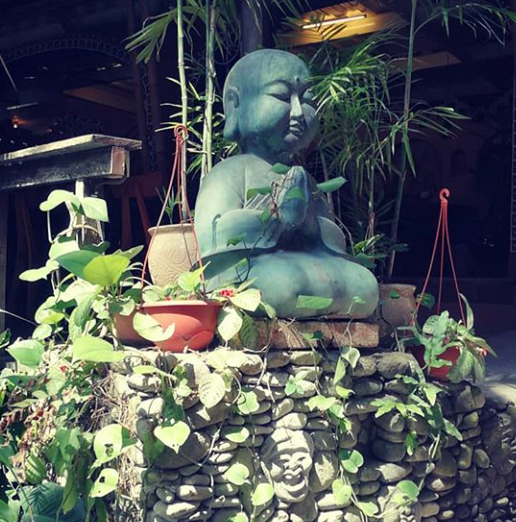“Sati”, mindfulness meditation.
Mindfulness meditation (“Sati” in Pali) is a Buddhist practice that allows us to come home to our senses. Its main principles are a capacity for acceptance that grows the more we practice; It also develops a sacred container within ourselves (during a conversation for example, we pause and feel); It creates a shift in our identity by allowing us to grow into more multiplicity. Mindfulness has 4 foundations: mindfulness of the body (body scan meditation), mindfulness of feelings and of the mind (internal application of mindfulness) and of the object of the mind (of the environment we are in).
Mindfulness always has an anchor and 3 tenets:
Arriving and centering, where we set up the container of our practice, our intentionality. Here, we are with our authentic self where all feelings are welcome. The pause into arriving and centering is called “mere recognition” or light recognition, we acknowledge what is happening with ourselves in that present moment, but we do not investigate with the mind, we are not interested in the story or the content: thoughts arise, thoughts pass away. It is a phase of honesty with us regardless of how vulnerable we might feel.
Anchoring and labelling: use of the breath as an anchor while becoming aware of physical sensations, emotions and mind states. For this we use the method of one-pointed attention, “Shamatha” in Buddhism or calm abidance, which is the cultivation of calmness via concentration. The method uses breath awareness “anapanasati”, examine the breath and cultivate the attention. Mindfulness of breathing is a concentration method in training the mind.
Allowing and letting go: we allow and let go of thinking that we should feel a certain way while holding a yin pose, for example.
Vipassana (penetrative seeing) is another Buddhist meditative tradition that builds on Shamata. In that method, the practitioner acknowledges his/her vulnerabilities by observing things as they really are, without forming a judgement or having expectations. It is a practice of mental cultivation that aims at gaining insight into who we are while observing negative thinking patterns, “psychic irritants” (greed, hatred, jealousy) and letting them go. In that sense, mindfulness meditation is a gateway to learn about ourselves, it is the study of change and a tool of self-transformation through self-observation that over time, builds and maintain a healthy mind.


